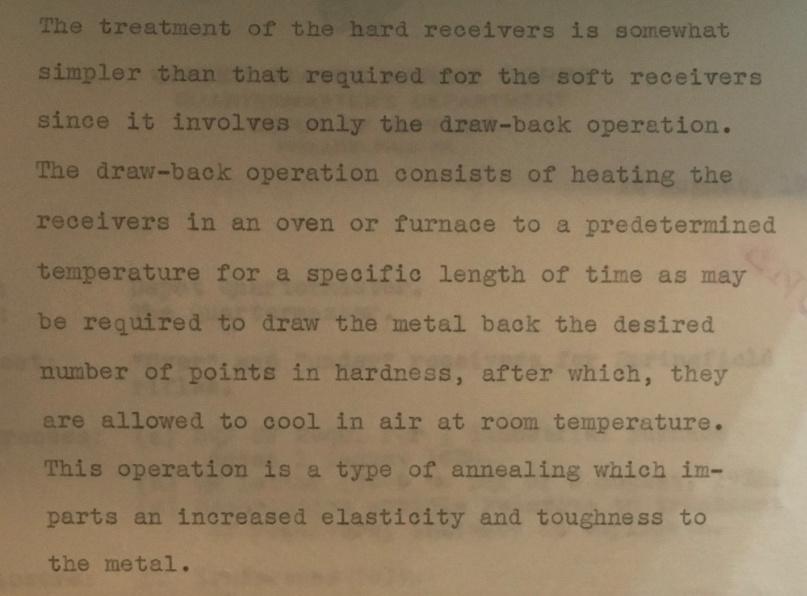You know to be honest, I can't really remember where they went from there. You see hundreds if not thousands of pages on the low number recievers in the Marine files, but most of the time you just see them concluded that they shouldn't shoot rifle grenades with low numbers to be safe.
Then in 1938, the Marines had a big push to try to fix receivers. Which they honestly had trouble with both lows and highs, which they called "Unders" and "Overs." That is when they started trying to fix the overs and unders with heat treament that were too soft and too hard. They claim in the study they could fix them. Hard receivers only went through the draw back process. The softs went through a heat treament with oil quench, and then a drawback process as well. But to be honest, I can't remember where it goes from there. I don't think they did it a long time if my memory serves me right. Now whether it just wasn't a success or the war was escalating and they were in a hurry and quit, I honeslty can't remember.
This was also about the time, they sent a rep to SA to learn how to do hatcher holes and enlarge the gas escape hole in the bolt. So they might have just screw heat treating the receives with heat treament and did hatchers as a much easier and quicker band aid fix.
If I get time early this week, I will dig those files out and see where it went. I just can't remember off the top fo my head. It's been a while since I looked at those and I've really didn't read that series of docs that close. I think it does explain why they quit doing it, but I can't really remember.
I do have the rockwell case study on hand though, because it explains some Marine traits on the rifles they rebuilt, so I have that filed where I know where it is is. But this is the process as they describe it on the doc for how they fixed hard/brittle receivers.

- Knowledge Library

- MKL Entry of the Month
- Australia
- Austro-Hungarian Empire
- Canada
- Czechoslovakia
- Denmark
- Finland
- France/Belgium
- Germany
- Italy
- Japan
- Norway
- Russia
- South America
- Sweden
- Switzerland
- Turkey
- United Kingdom
- United States
- Yugoslavia
- Is my rifle authentic or a fake?
- Jay Currah's Lee Enfield Web Site
- On-line Service Records (Canada)
- Technical Articles/Research
- Forum
- Classifieds

- What's New?
-
Photo Gallery

- Photo Gallery Options
- Photo Gallery Home
- Search Photo Gallery List
-
Photo Gallery Search
- Video Club

- iTrader











 PM
PM
